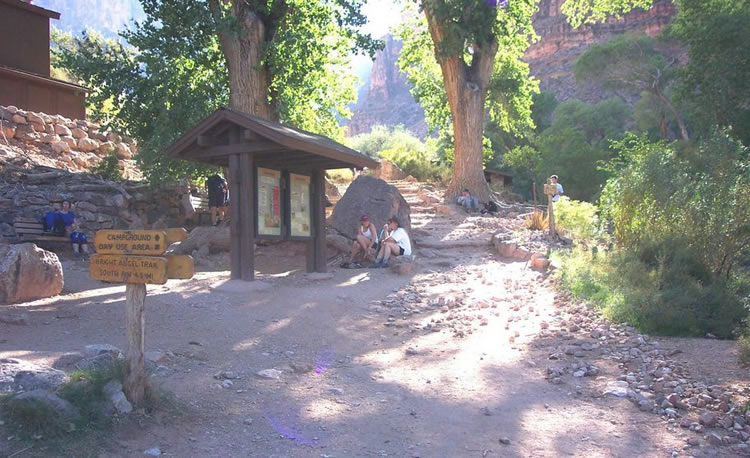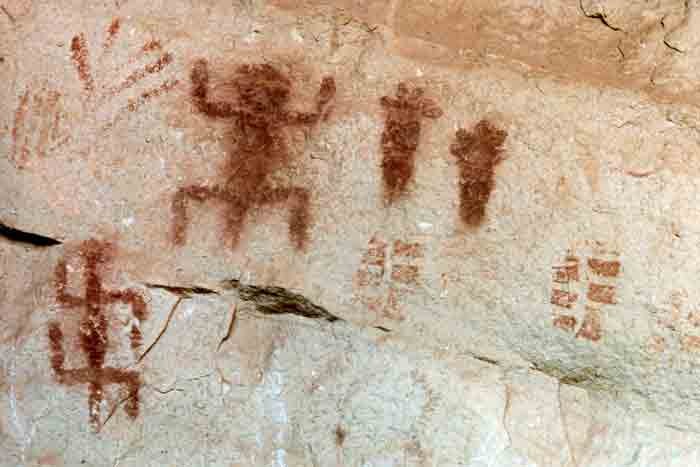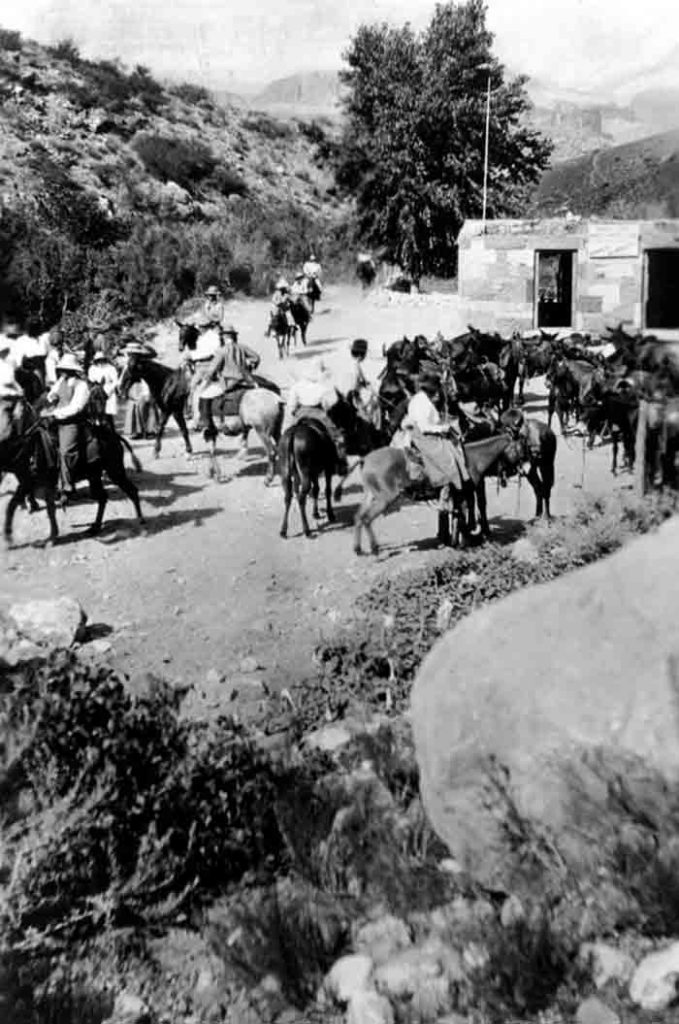What’s in a name? As with many geographic names in the United States, “Indian Garden” was named by Euro-Americans who, though they were visiting an area far removed from most of their kindred countrymen, realized that indigenous people had lived there before them. Indeed, the first Anglos to hike down from the South Rim to Indian Garden found it by following a Havasupai Indian route through Bright Angel Fault onto the Tonto Platform. A man working on improving the trail for tourists in 1890 noted that the ground had been cultivated, and earlier crops had been burned off after harvesting. Indians had gardened there – a simple, descriptive name for the area.
That fallow garden represented a distinct relationship between people and the landscape, a relationship most recently held by the Havasupais. But the human encounter with this marvelous canyon began at least 13,000 years ago.
Ancient Puebloans and Cohoninas made the Grand Canyon their home during the Formative Period (A.D. 300 – A.D. 1300), and there are several archaeological sites near Indian Garden from that time. The Cohoninas were less sedentary than the farming Puebloans, but both groups created ceramic pottery and lived off the animals and plants of the Grand Canyon. Puebloans built stone structures with circular kivas such as the ones at Bright Angel Ruin along the Colorado River, while the Cohoninas made circular pithouses of brush and mud, entered through the top, a similar design to a kiva.
Indian Garden has the remnants of ten seasonal structures, likely built by Puebloans to use during summer farming but possibly built by the Cohoninas. The shelters were constructed of stone foundations with wooden poles covered by brush. There are two granaries made of wood, mud and stone, tucked into the canyon wall near Indian Garden. The granaries were designed to keep the produce of the garden safe from the weather and hungry animals. There are small rock walls used to collect rain runoff and reduce soil erosion; they may even have served as solar heaters to nurture young crops of corn, squash and beans.
That early Euro-American visitor who noticed the remnants of gardens likely did not know the rich history that he had stumbled on. But he was right to recognize that earlier cultures had experienced and interacted with the Grand Canyon.
Although Indian Garden and the Tonto Platform had been used by Native Americans for centuries, it wasn’t until the late 1800s that Anglos paid much attention to the area. In 1882, a railroad arrived in Flagstaff, making the area accessible. By 1885, a wagon road had been built to the Grand Canyon’s south rim. Men looking to make their fortunes prospecting or through business ventures soon found their way to the Grand Canyon.
One of those men was Ralph Cameron, who arrived from Maine in 1883 and spent the winter of 1889 prospecting near Indian Garden. By 1903, Havasupais living in the area allowed Cameron to open a tourist business called “Cameron’s Indian Garden Camp,” with seven tent cabins and meals for guests.
During the heyday of Cameron’s Indian Garden Camp, mule riders would be treated to quite a comfortable setting. Cameron had planted a garden and orchard for food, as well as cottonwood trees for shade. He built a laundry, kitchen, root cellar, tool shed and a telephone line to the south rim. But by 1917, the camp had fallen into disrepair. In 1923, the National Park Service took control of Cameron’s camp.
Today, Indian Garden offers picnic tables and benches for day use as well as a campground for overnight backpackers. Toilets and drinking water, piped from the north rim, complete the amenities.
Ask hikers coming up Bright Angel Trail how they liked Indian Garden and you are likely to get a smile and an easy sigh. Roughly halfway up from the bottom of the Grand Canyon in both distance and elevation, Indian Garden welcomes hikers with cottonwood trees, bushes, vines and shade.
It is a place for a lunchtime respite, to gather strength and the mental fortitude to face “the wall,” the final stretch of trail that goes up about 3,000 feet in three miles. The seemingly endless switchbacks approaching the south rim are the part of hiking the Grand Canyon that breaks all but the hardiest of hikers. But Indian Garden … ah, that is an interlude between leaving the haven of Phantom Ranch and reaching the hospitality of the south rim.
Written By Patricia Biggs
References:
- Anderson, Michael F. Living at the Edge: Explorers, Exploiters and Settlers of the Grand Canyon Region. Grand Canyon Association, 1998.
- Hughes, J. Donald. In the House of Stone and Light: A Human History of the Grand Canyon. Grand Canyon Association, 1978.





